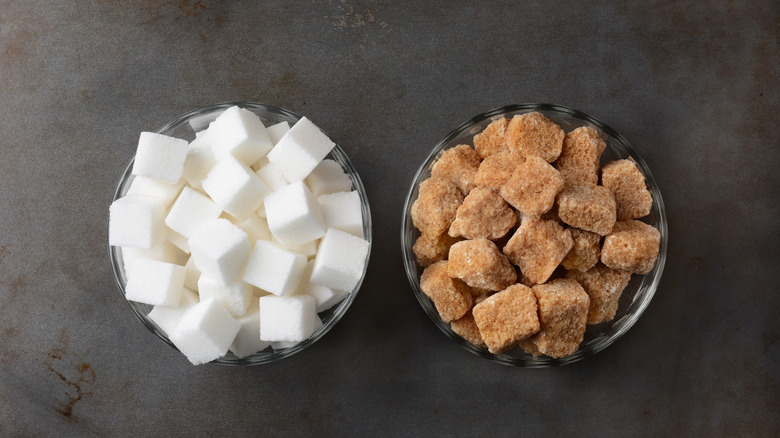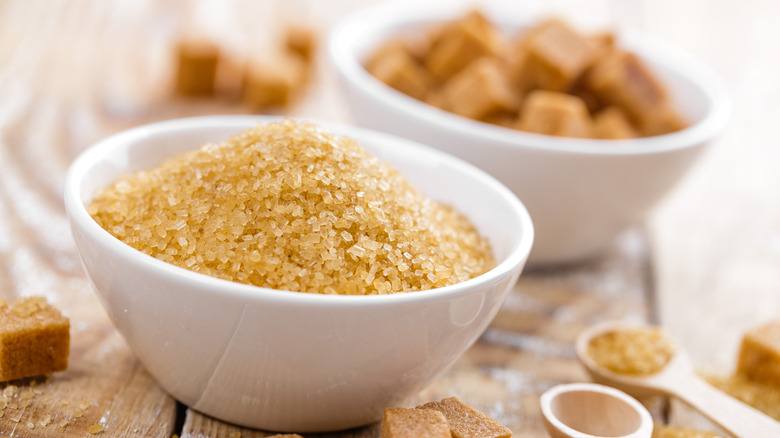What Can Happen If You Swap Turbinado Sugar For Brown Sugar
Sugar is sugar, right? Well, not exactly. While you are probably familiar with white granulated sugar, there's powdered or confectioners sugar, fruit sugar, baker's sugar, superfine sugar, coarse sugar, standing sugar, liquid sugar — the list goes on. There are even different classifications of "brown sugar" such as light or dark, turbinado, and muscovado (via The Sugar Association). While this could turn into a very long article getting into the nitty gritty of sugars, today's all about brown sugar versus turbinado sugar — and what happens if you swap one for the other.
Let's start with the basics: What's the difference? According to The Sugar Association, brown sugar is made by mixing white sugar with various amounts of molasses, hence light and dark brown sugar. Due to this, they contain more moisture than white sugar and produce baked goods that stay chewy. Turbinado sugar, on the other hand, is a partially processed sugar that naturally contains molasses. As Taste of Home notes, this sugar is the result of boiling and forming crystals from the syrup created when sugar cane is pressed.
So, what happens when you use one for the other?
Swapping one sugar for another
While both traditional brown sugar and turbinado sugar are considered brown sugars, which include molasses, there are two main differences to consider when swapping one for the other. The first is the molasses flavor. While this may not be as noticeable, molasses adds notes of butterscotch or caramel and its flavor will be less pronounced and noticeable when turbinado sugar is used. In addition, with less molasses in turbinado sugar, the food or beverage being sweetened will be paler in comparison to those using brown sugars (via Spiceography).
More importantly, turbinado sugar does not contain as much moisture as brown sugar, which can result in drier or more crumbly finished goods. While at many times it won't make a difference, you may want to consider the texture and amount of moisture wanted for the end result. In addition, the raw turbinado sugar may not mix into doughs or batters as well as brown sugar will. This can result in a different texture and graininess (via Healthline).
Instead of using turbinado sugar in place of brown sugar, try it out in some recipes that call for granulated white sugar. Its texture and moisture count is more similar to white sugar, but it adds extra flavor.

